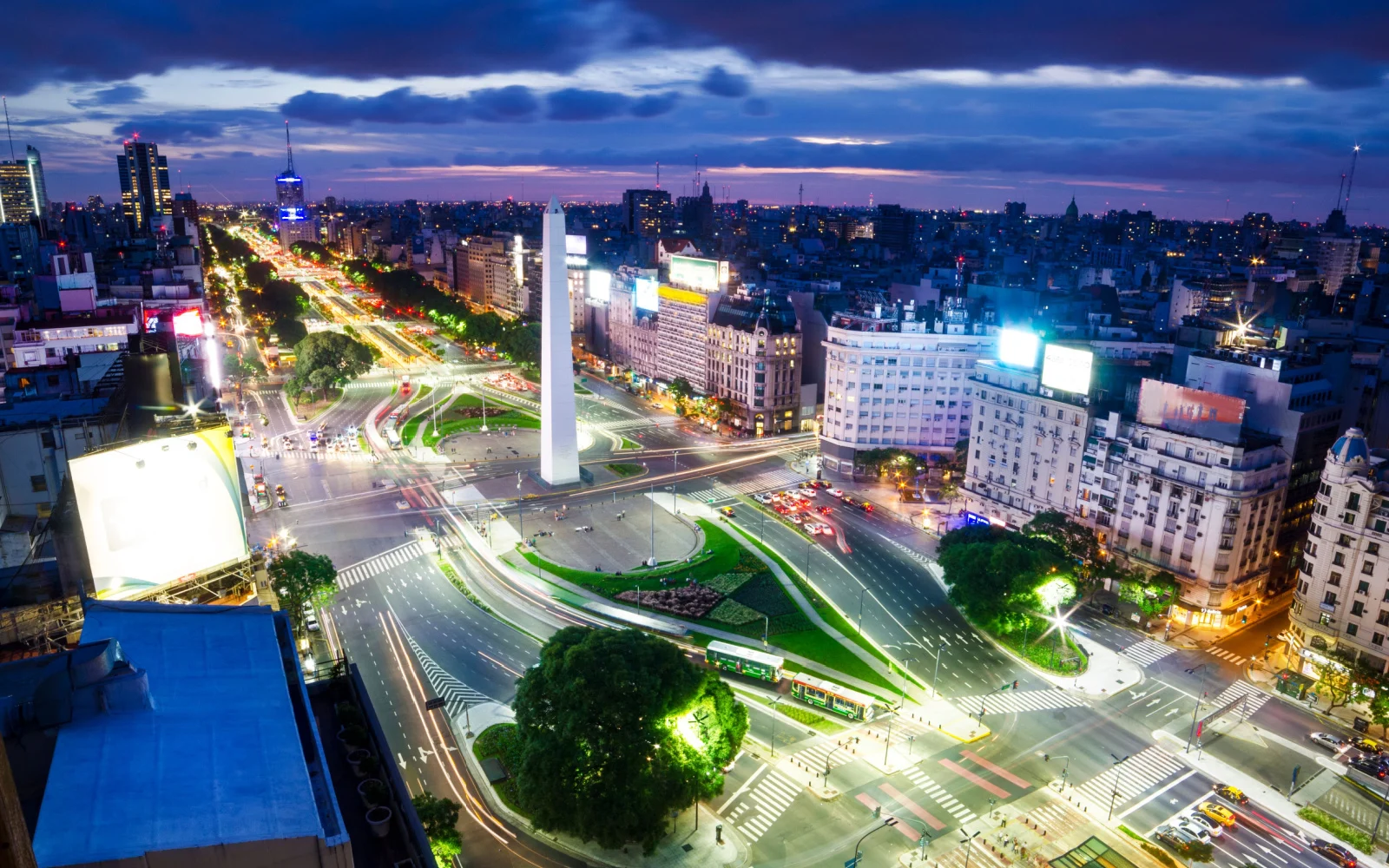What's the best time to visit Buenos Aires?
The best times to visit Buenos Aires are in the fall (April to June) and spring (September to December), offering comfortable weather and a rich cultural scene with events like the BAFICI film festival and Buenos Aires Jazz Festival. These seasons combine pleasant temperatures, fewer crowds, and cheaper flights and hotels for travelers.
A pulsating, tango-oriented, and cosmopolitan city, Buenos Aires is one of the most exciting capitals in the world. Given its rich cultural heritage, vibrant nightlife, modern art scene, and welcoming locals, it’s no wonder why visiting it is so transformative, even for the most traveled of people.
But before you plan out your trip, you need to learn what the best time to visit Buenos Aires is. We’ll show you this and much more in our detailed guide below.
The Overall Best Time to Visit Buenos Aires
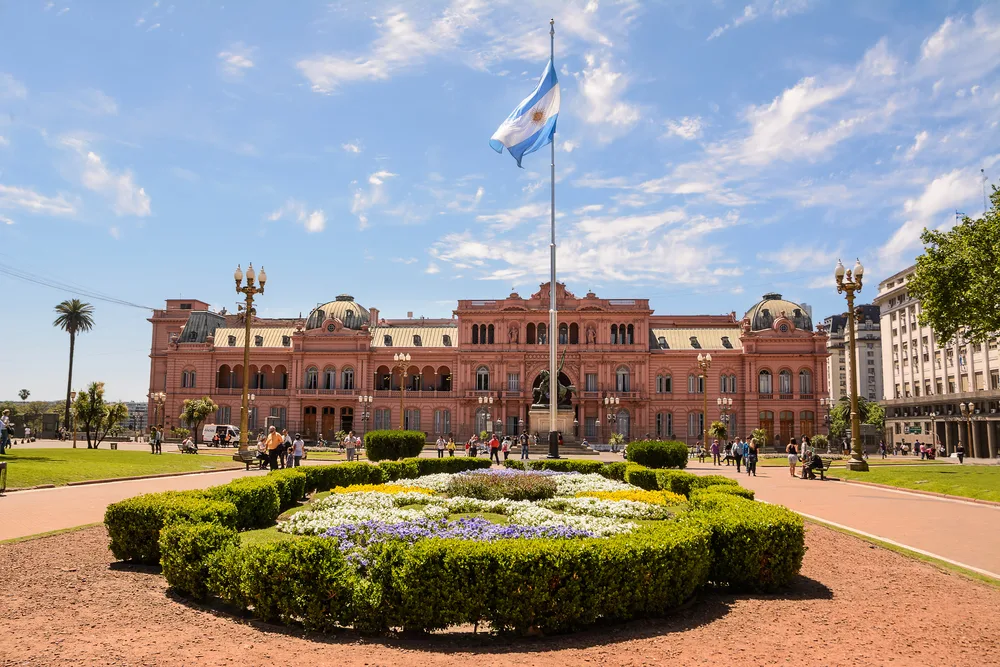
Buenos Aires, Argentina – October 30, 2016: Casa Rosada in Plaza de Mayo in Buenos aires with tourist in a sunny day/Angelo DAmico/Shutterstock
The best times to visit Buenos Aires are during the fall, from April to June, and the spring, from September to December. During the fall, temperatures range comfortably between 54°F and 73°F, creating a pleasant environment for experiencing the city’s beautiful fall foliage.
This season is also economically advantageous as accommodation rates are lower, and visitors can enjoy significant cultural events such as BAFICI, a renowned independent film festival, and the Feria del Libro, one of the world’s leading book fairs. In addition, May celebrates the Día de la Revolución de Mayo, a key national event.
In contrast, spring in Buenos Aires brings mild temperatures, starting from 50.7°F in September and gradually warming to around 84.6°F by December.
This season is culturally rich, with diverse festivals like the Ciudad Emergente music festival, the Buenos Aires Marathon, and the Buenos Aires Jazz Festival. November, although the rainiest month, offers unique experiences like the Night of the Museums.
December, the sunniest month of the year, is marked by celebrations such as National Tango Day and New Year’s Eve, adding to the festive atmosphere.
Both fall and spring in Buenos Aires offer visitors a perfect mix of pleasant weather, fewer crowds, cultural richness, and lower costs, making them the best times to explore and experience the city’s unique charm and vibrancy.
Cheapest Time to Visit Buenos Aires
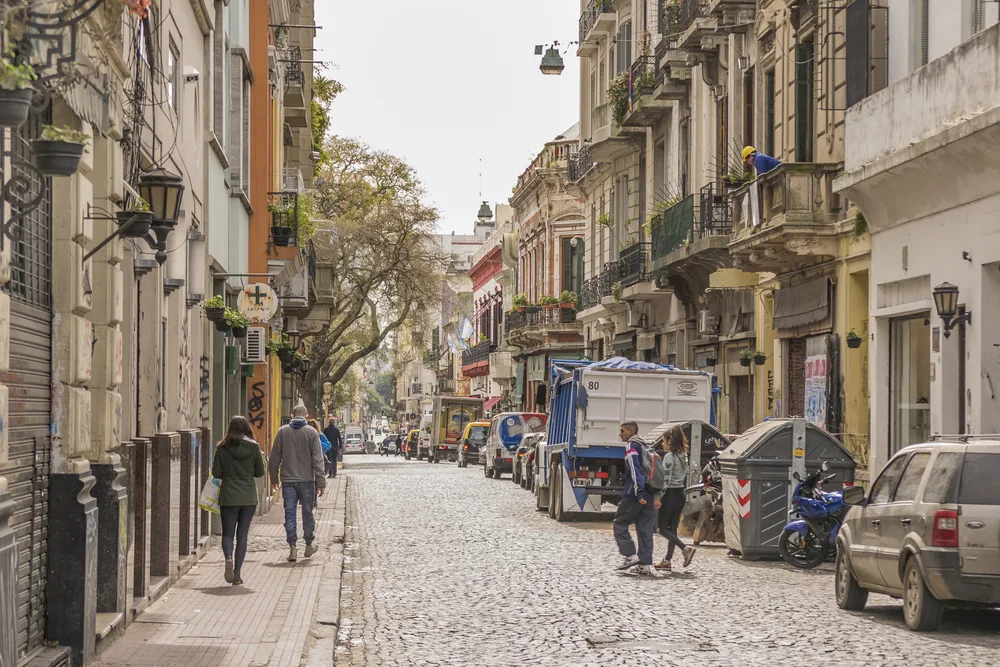
BUENOS AIRES, ARGENTINA, AUGUST – 2015 – Urban scene at a winter day of street in San Telmo, a traditional touristic place in the city of Buenos Aires, Argentina/DFLC Prints/Shutterstock
The cheapest time to visit Buenos Aires is from June through August. It’s when travelers can take advantage of affordable accommodation options and airfare tickets.
With temperatures ranging between an average high of 57.2°F and an average low of 46.6°F, July is the coldest month in Buenos Aires. July sees the celebration of Independence Day.
It’s a significant public holiday, as it commemorates the day Argentina declared independence from Spain. Locals take to the streets and organize a myriad of patriotic celebrations, parades, and rallies.
Those keen to experience some countryside vibes should put Exposición Rural on their July list. An annual agricultural show, this rural exhibition was founded with the motto, “To cultivate the soil is to serve the country.”
August sees temperatures fluctuating between a maximum of 62.1°F and a minimum of 48.7°F. It’s the perfect time to tango, and no wonder, as the biggest tango event takes place in the city, the Buenos Aires Tango Festival & World Cup.
Loved by both locals and visitors alike, the event features many international couples, competitions, dance shows, and tango classes.
Finally, you can secure an affordable stay in Buenos Aires regardless of when you go — just make sure to follow our tips in the Things to Consider section.
Least Busy Time to Visit Buenos Aires
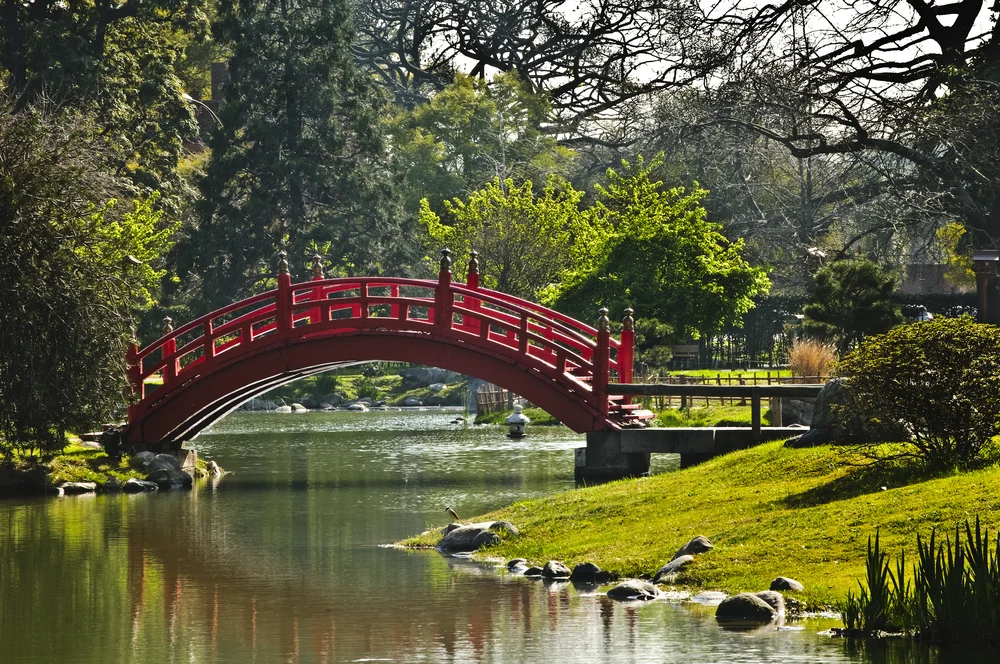
Roberto Delamora/Shutterstock
The least busy time to visit Buenos Aires is in June. It’s one of the slowest months in Buenos Aires when it comes to tourism.
A moderate month, June has varying temperatures between 58.8°F and 48.4°F. June is also the month with the least rain. However, with almost 10 hours of daylight on average, it’s also the month with the shortest days of the year.
And while Buenos Aires sees fewer tourists in June, it also sees fewer events. However, you can always take day trips or include other locations as part of your itinerary.
For instance, if you truly want to experience an Argentinian celebration, Gauchos of Güemes Parade is a must. Hosted each year in Salta, the parade pays homage to General Juan Martin Miguel de Güemes.
Known to have defended northwestern Argentina from the Spanish army during the Argentine War of Independence, this liberator fought for national sovereignty. He was accompanied by his so-called gauchos, hence the parade’s name.
Worst Time to Visit Buenos Aires
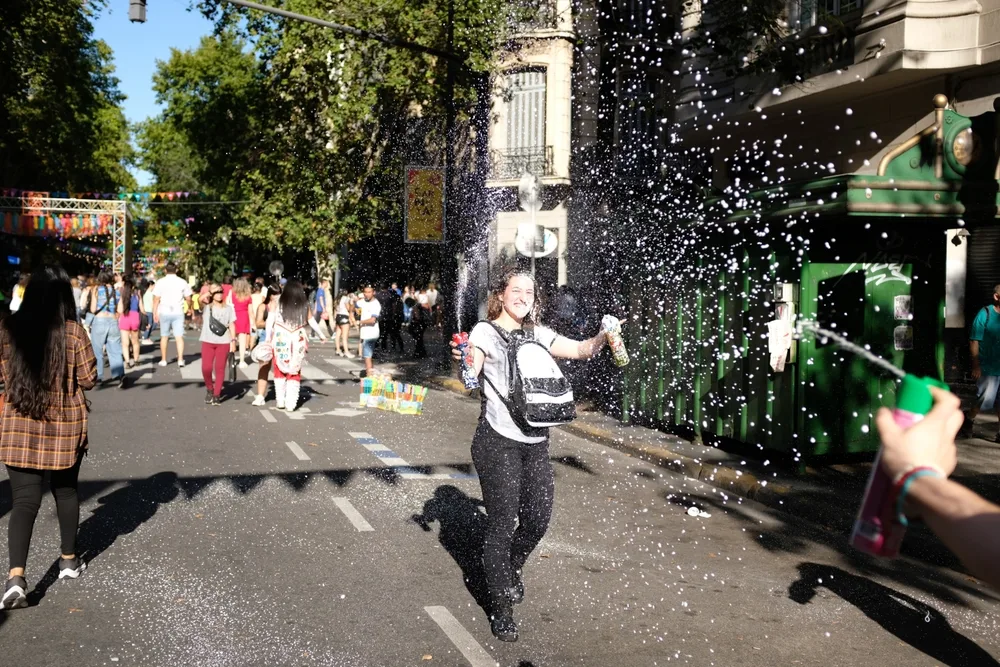
BUENOS AIRES, ARGENTINA – FEBRUARY 21, 2023: Carnaval Porteño on Avenida de Mayo. A woman sprays foam during a carnival celebration/Oleg_Belov/Shutterstock
The worst time to visit Buenos Aires is in January and February. January is the hottest month of the year, with temperatures varying between an average high of 87.6°F and an average low of 68°F.
The average heat index is estimated at a hot 93.2°F. The seawater temperature is the warmest in January as well. With an average relative humidity of 56%, January is also the least humid month.
It’s also when all locals and guests hit the beach (read: occupy it), and finding shade or even a place to leave your towel becomes an impossible mission. Schools are off, so there’s a bunch of kids running around too.
This also translates into a lot of family trips, as people take time off work to either escape the city heat or harsh winters if they’re coming from the northern hemisphere.
Visiting Buenos Aires in January requires booking in advance, as it’s peak season. However, chances are prices will be high regardless of when you end up booking.
In any case, Argentine summer requires proper celebration, and Verano en la Ciudad is the perfect excuse to experience it first-hand. February sees average temperatures varying between 85.1°F and 67.8°F.
The heat index is evaluated at a tropical 89.6°F. But many don’t care about the heat, as February screams Carnival time!
With parades each weekend building up the pressure for the official event, many troupes perform the so-called murga (a type of dance) on the streets, and everything seems brighter, livelier, and more colorful.
While visiting Buenos Aires in summer can be challenging due to the large crowds, higher prices, and boiling temperatures, the festivals during that period make it all worthwhile.
Things to Consider
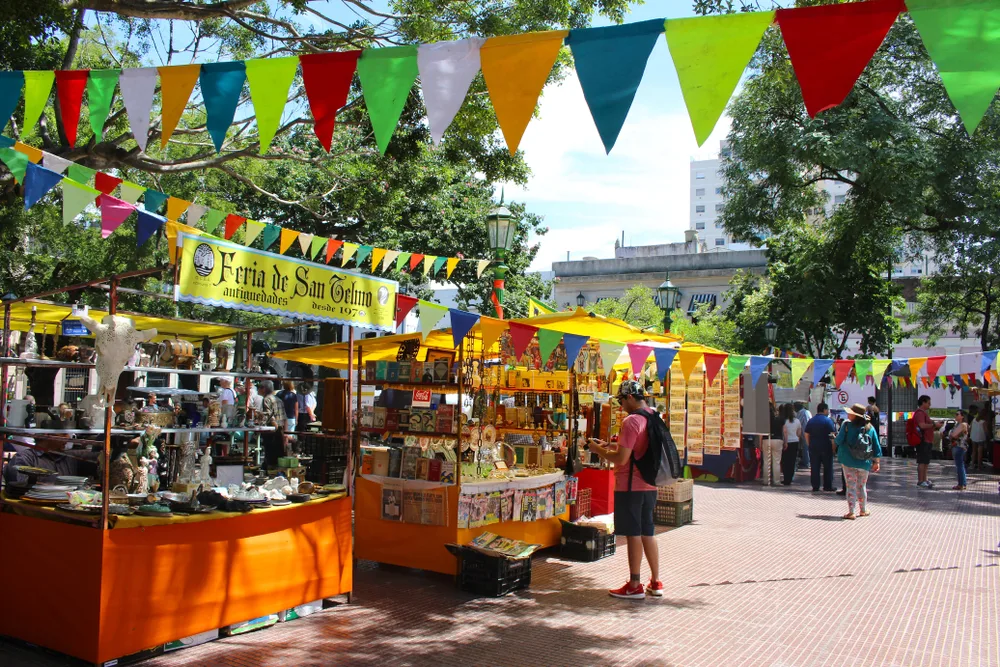
Buenos Aires, Argentina – 2018-02-04 : Feria De San Pedro Telmo, or the San Telmo fair a or market held on sundays in Buenos Aires, Argentina/GVictoria/Shutterstock
Now that we covered the best time to visit Buenos Aires, go through the following travel tips to ensure a stress-free visit:
- Improve your bargaining skills. Instead of shopping in the nicer districts, visit stores in San Telmo or Boca to score better deals. Do note that many shops don’t accept credit cards, so make sure you always have some money with you.
- You may be surprised to see that almost all streets in the city have at least one little supermarket. Locals enjoy doing their grocery shopping in smaller stores than going to hypermarkets. Feel free to use these supermarkets yourself as they’re much more practical and closer regardless of where your accommodation is.
- To help yourself with your Buenos Aires travel budget, exchange money at the right place. Many streets have exchange offices, or casas de cambios, but it’s well-known that going to Calle Florida will get you the best deals.
- Pick up some local traditions or customs during your stay. For instance, locals have the habit of greeting others with a kiss on the cheek instead of the Western way of shaking hands. Also, maintaining eye contact during conversations is advisable.
- Waiters are usually used to receiving a 10% tip. Of course, if the service is extraordinary, you’re free to leave more.
- While drinking tap water is safe in Buenos Aires, those who want to play it extra safe can always opt for bottled water instead.
- People go out late. They even have dinner late — around 9 p.m. or 9:30 p.m. If it’s the weekend, they might even push it to 10:30 p.m.! Night owls should definitely consider long-term stays in Buenos Aires.
So, When Should You Visit Buenos Aires?
Our guide covered a lot of details, so to make sure you’ll leave with what we consider to be the most important information, we’ll briefly summarize the main points.
All things considered, the best time to visit Buenos Aires is either in the April–June period or anytime from September to December. Fall sees a drop in prices and tourists but an increase in events. The spring period is also packed with vibrant events.
Finally, note that the best time to visit Buenos Aires also depends on what you wish to do/see when you’re there. However, one thing’s certain – whatever you decide, you’re in for a treat. So what are you waiting for — book your trip today!



